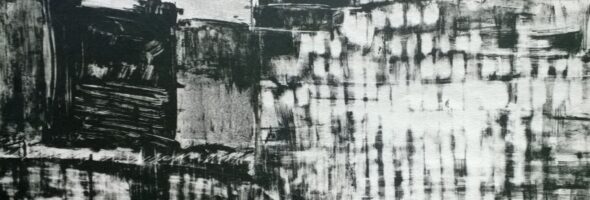Global awareness of the importance of space and its impact on the daily lives of human beings has been experienced by many throughout the COVID-19 crisis and lockdown. Concepts of pre-COVID spaces have been disrupted and with it our lives and education systems in unprecedented ways. The COVID-19 pandemic has provided the Shared Learning Spaces (SLS) team with outstanding opportunities for building on existing SLS research and practices, which focus on innovating new ways of transdisciplinary shared learning which cut across physical, social and pedagogic boundaries and cultures – addressing truly global imperatives. Making full use of this unique opportunity, which resonates with living the values of social justice and inclusion, involves working in transdisciplinary teams where mapping, theorising, designing, experimenting and constantly analysing and reflecting is what we do.
Learning spaces is an emerging complex interdisciplinary field (Boddington and Boys, 2011). The importance of designing our learning spaces is well documented (Mulcahy, Cleveland and Aberton, 2016) after all, designing meaningful learning requires processes that are co-constructed by those within through creative, agile, pedagogic interpretation. Such positioning emphasises inter-relational design thinking about how flexible physical spaces connect with cognitive and social spaces leading to expansive, deeper shared learning within and far beyond classroom walls. Whilst many educational institutions are investing heavily in transforming the built environment, this is rarely aligned with the design potential of pedagogic practices which are integral to deeper learning. In other words, such investment is unlikely to make a significant difference to the quality of student learning (Byers, 2014) without dynamic pedagogic design (thinking which is not in the regular repertoire of educationalists anywhere). Such thinking brings together physical, social, cognitive and virtual components of the design of learning (spaces) which are fluid, agile and depend on co-ownerships and understanding between students and educators [1]. The issue here is that educators are often unaware of the ‘power of place and space’ – it is neither integrated into teacher education programmes nor in educational discourse across sectors. Research carries strong messages which remain ignored. This is why Moray House researchers must act – an experienced transdisciplinary international team is in place to transform COVID-raised awareness of space into dynamic learning practices. We believe it is our collective and moral responsibility to co-design shared learning spaces across our university and beyond.
The principles underpinning Shared Learning Spaces are embedded in holistic and dynamic spatial literacies. Shared learning is based on a simple tenet: meaning-making is socially constructed. But when learning sites are pedagogically connected (inside-out, outside-in, between individuals in the same physical space or across transnational groups learning groups, community-individual, across boundaries – physical, virtual and time zones, cultures and communities), the potential for deeper, global, relevant learning is enhanced through sharing processes e.g. problem-solving, communicating, negotiating, arguing and so on.

The SLS Team is committed to realigning pedagogic goals through inclusive, research-driven site-based learning spaces – perhaps best described as offering flexible Learnscapes. These need to be constantly physically, digitally, spatially and conceptually reconfigured and co-designed with students, educators and researchers to provide enriched learning contexts for participants. This involves further support in multimodal shared learning (any age or stage) in the ‘here and now’ and fit-for-purpose Learnscapes in a rapidly changing world.
Since 2017, the SLS Team in MHSES has experimented the technological infrastructure specially designed as ‘start-up’ by the University’s Lead in the Learning Spaces Technology Team, in a large room in Charteris Land. In line with the University’s Estates Vision, we want to not only develop an ‘outstanding teaching and learning space,’ and ‘inspirational and contemporary research facilities’, as well as supporting innovation through providing ‘collaborative spaces where industry… and the University can interact and ‘breathe the same air’’[2] but also and crucially so, to link these ambitions to newer concepts of designing expansive learning for all of our students whatever their discipline – without this crucial step the investment cannot come to fruition.
The SLS team connects with academics e.g. in Australia, professionals (architects, designers, digital experts, furniture manufacturers, estate managers), local authorities and Scottish Government agencies as well as business and community networks. Examples include: spatio-pedagogic literacies connecting pupils in primary and secondary schools with our student teachers on Initial Teacher Education (ITE) programmes in MHSES (pupils demonstrated via visual and digital connectivity to students teachers how they like being taught to student teachers and challenged the student teachers to respond); developing a Design Tool Kit for agile learning with Architecture and Design Scotland for educators; presenting webinars at the Learning Spaces Design Festival 2020; and exploring how Master’s students can carry out practical elements of their degrees in practice-relevant contexts such as in China or Taiwan. As a force to bring about change, we want to support future teachers in understanding how space, including the virtual and hybrid, impacts on learning, wellbeing, achievement and attainment. In the Covid-19 pandemic world, this matters more than ever for all students across all sectors. The research of the SLS Team not only focuses on student teachers (although over 400 students undertake ITE programmes each year) but on creating deeper learning experiences for all students. The team is ambitious in its vision pioneering new ways of teaching, learning and researching to provide access to cost effective, technologically-accessible, locally-connected shared learning experiences for all. This is work with which a world-leading university needs to engage as a matter of urgency.

More information from https://blogs.ed.ac.uk/sharedlearningspaces/
[1] Bradbeer, C; Mahat, M; Byers, T; and Imms, W (2019) A Systematic Review of the Effects of Innovative Learning Environments on Teacher Mind Frames The University of Melbourne.
[2] University of Edinburgh Estates Department (2017) Estates Vision 2017-2027. https://www.ed.ac.uk/files/atoms/files/estates_vision.pdf
Author
Do Coyle (Lead Shared Learning Spaces Team)
Image Credit: Untitled, Creator: [Coffin?], Joanna, University of Edinburgh Collections, Catalogue No. 0019816



Pingback: The Edinburgh Hybrid Teaching Exchange – monthly digest – Bulletin magazine